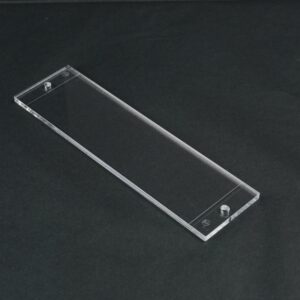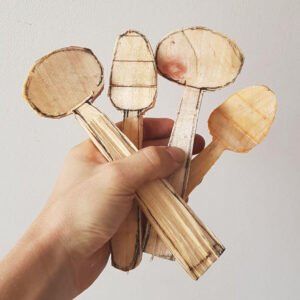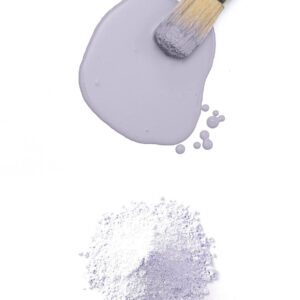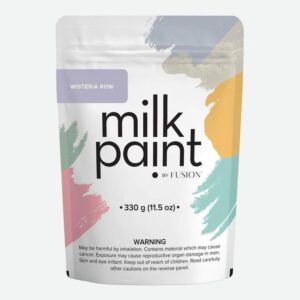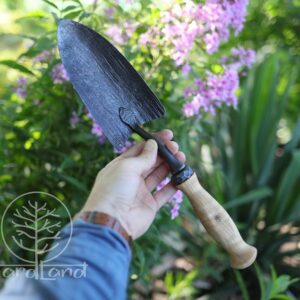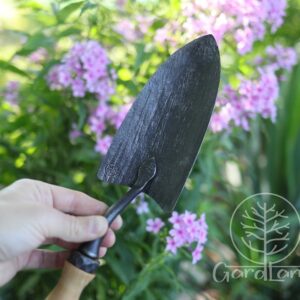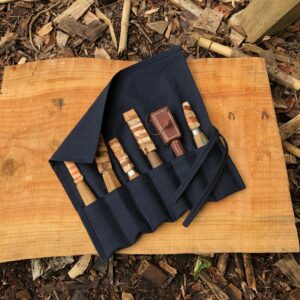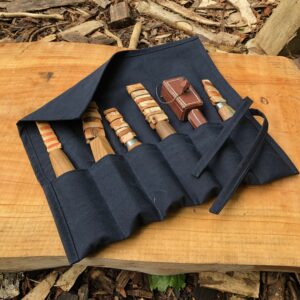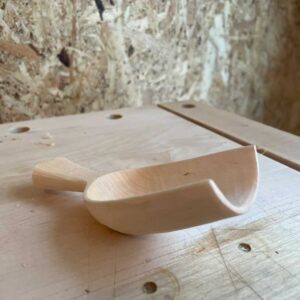Before we get started on how to learn to sharpen a hook knife like a pro I’d like to highlight that sharp tools are essential both for safety and success with any wood carving project. As a novice woodcarver, you don’t need to invest in an entire array of tools. A basic set of tools will suffice for your early stages and allow you to become accustomed to your tools, gain insight into working with different types of wood, and master the fundamental carving techniques. Once your skills have increased, consider investing in additional tools to take your craftsmanship further.
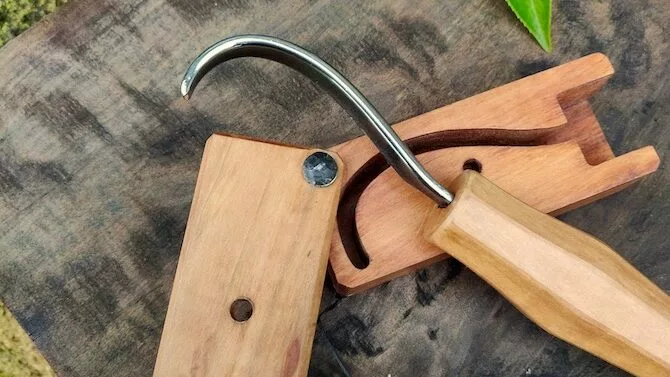
What is a Hook Knife
Manufactured with a hook-shaped blade, hook knives are used for crafting wooden spoons, wooden cups, and bowls. It is an essential tool for carving out concave shapes, shapes. Hook knives come in a multitude of shapes and sizes, varying from circular to compound and open curves.
Check out a variety of hook knives made by the most talented tool makers at The Spoon Crank marketplace.
What to Prepare Before Sharpening
To properly sharpen hook knives, all that is required is:
- a wooden dowel
- abrasive paper of #400, #800, #1500 and #3000 grit
- a flat strop – often made of a piece of piece of leather mount on a flat piece of wood
- a round strop – made of two pieces of leather attached on a wooden dowel
- Polishing compound
- a marker – to illustrate where most of the abrasion happens.
Check out The Spoon Crank Sharpening Kit – includes everything you will be needing to efficiently sharpen your hook knives. All of the necessary equipment and material is included in one convenient package.
Proper lighting and a comfortable working height is also essential. Use a block of wood or other support to raise your work at a comfortable level. Maintaining a proper body posture will not only improve your productivity but also benefit your health.
How to Sharpen a Hook Knife
We always sharpen hook knives on the inside of the hook, never on the outside! Begin by a taking a close look at the blade to determine if you should start with a coarse or fine abrasive grit. I also like to run my nail along the edge to feel if there are any nicks or across my finger nail to determine how blunt an edge is. If it catches it’s sharp, if the edges skids on my nail it definitely needs sharpening.
Before starting, mark the inside of the hook with a marker pen so that you easily see the results of you work once you start sharpening.
Make sure that the sharpening dowel is lying flat on the inside of the hook blade. Aiming only at the edge will result in altering the bevel angle. Keep examining where most of the abrasion happens as if it’s not done correctly creating a steeper bevel angle, will result to a dull edge. Divide the blade into sections and sharpen one at a time, as sharpening the whole blade in one stroke can be more challenging. Push and twist the sharpening dowel in a smooth motion maintaining a consistent angle. Keep working up the grits until your blade is sharp.
To determine if the edge is sharp enough, use your fingers tip to feel for a burr on the opposite side of the blade. A burr is a thin, rough ridge or edge of metal that forms when a blade or tool is sharpened. It is created when the metal is pushed beyond its original position during the sharpening process, resulting in a fine protrusion of metal on the opposite side of the edge. The presence of a burr can indicate that the blade or tool has been properly sharpened and is ready to be stropped.
Stropping A Hook Knife
To eliminate the burr on a hook knife blade we will use a flat and a round strop and some polishing compound.
Flat strop
To remove the burr created on the outside side of the blade, add some polishing compound on the suede side of a flat strop and slide the strop onto the outside part of the hook blade away from the edge. Slide the strop as parallel as possible to the blade to avoid any micro-convection. Due to its domed geometry can be challenging. Therefore, when stropping, hold it so that it meets the burr evenly. Look closely and use your finger tip to feel if the burr is gone.
Round strop
Now it’s time to strop the interior bevel, to polish the inside part of the blade we will use a round strop. Generously coat the suede part of the round strop with some polishing compound. Run and twist the strop on the inside of the blade applying consistent pressure and making sure that your strop lays flat. After you have honed the inside edge of your blade with 10-15 strokes. For better results, overlap your sections as you work on different parts of your blade. The blade should now be razor-sharp and able to carve wood efficiently, leaving a shiny finish.
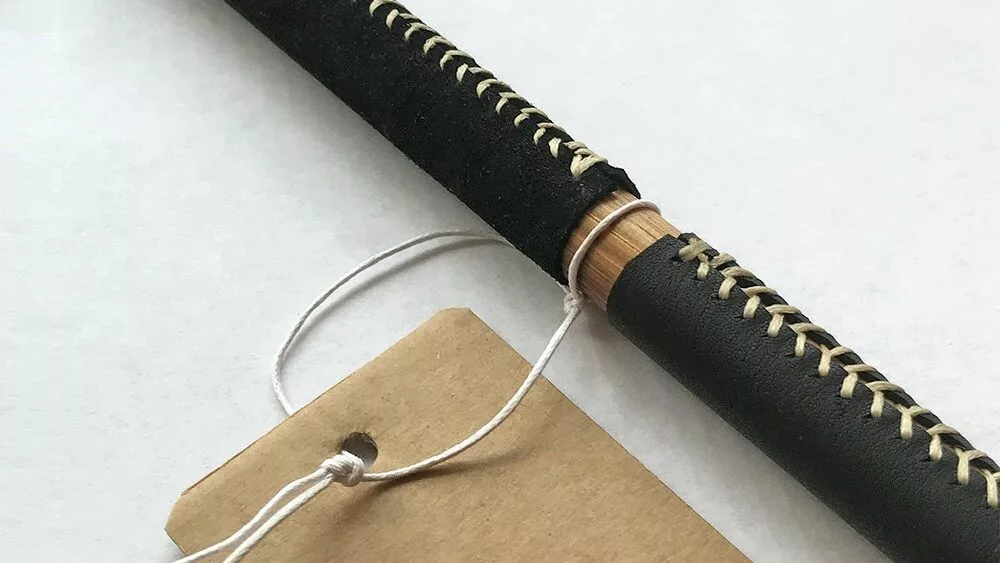
Looking for a superior hook knife sharpening results? Look no further than The Spoon Crank Kangaroo Round Strops. Crafted with veg-tan kangaroo leather and dowels of solid oak that have been impregnated in 130°C/266°F with refined linseed oil to ensure stability and weather protection.
Once your hook knife is sharp, wrap the blade in a cloth or use a leather sheath to protect the edge from getting in contact with other tools within your tool boxes or tool rolls.
When using a hook knife, ensure the edge does not bang against anything hard and never place the knife on bare hard floor. A small dent on a sharp edge can take some time to fix. If your blade is not made of stainless steel, a light coat of mineral oil applied to the blade can help against corrosion.
Final Thoughts
If you’ve decided to take up carving, understanding how to sharpen a hook knife and the different sharpening techniques is essential for maintaining your tools and better carving results. Though initially, it may seem daunting, with practice comes proficiency–and before long, you’ll be sharpening your hook knives like a pro.
Mastering the art of sharpening takes effort and patience, so don’t expect to learn it in one session. Keep practicing- sometimes you’ll see progress immediately, but other times not. If that’s the case, set your knife down and come back an hour later or tomorrow; getting upset won’t help you sharpen any faster. With a bit of dedication, eventually you will sharpen like a pro.
No matter how top-of-the-line or expensive your hook knife or chisel is, proper care will always be necessary; mastering sharpening early on, will elevate your craft on a different level.
Here at The Spoon Crank you can find all necessary tools and supplies to get started on carving wooden spoons. And if you have questions about sharpening, reach out now to learn more about the different sharpening systems available.
Images by: Aleks Majcen, The Spoon Crank
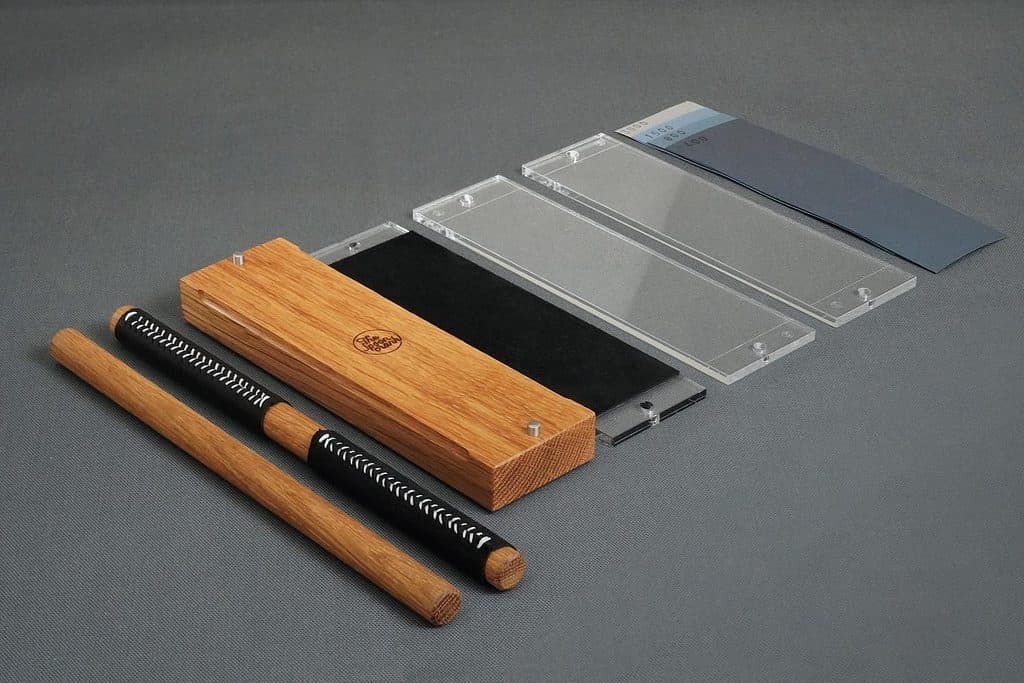
The Sharpening Kit (56)
★★★★★
Great sharpening kit and of high quality construction and materials. I would recommend this item to anyone looking for a compact and easy to use sharpening system. Definitely gets your edges scary sharp.
Michael Dalton (Verified owner) – September 16, 2022


